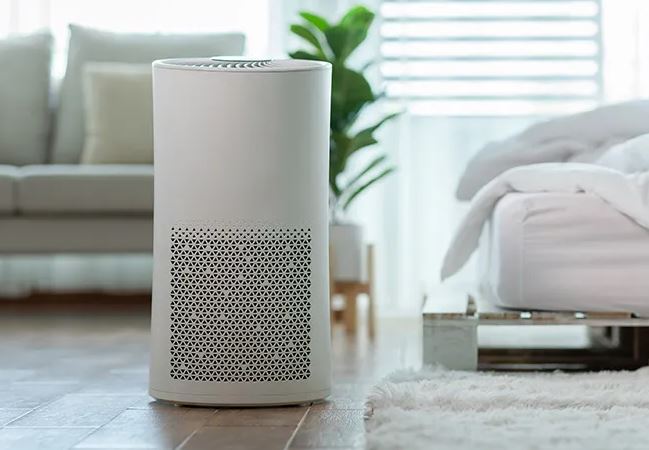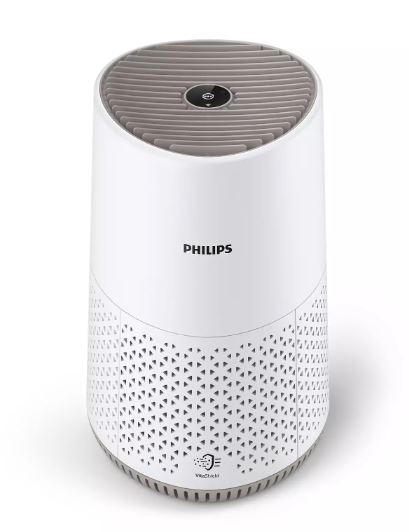In a health-conscious world, the air we breathe in has become a prominent focus for many people. With rising pollution levels and a greater awareness of the influence of indoor air quality on overall health on our health, it's no surprise that the air purifier market is booming.
Air purifiers are appliances that clean the air of pollutants in a given area, promoting healthier indoor air. They are ideal for individuals suffering from allergies, asthma, and respiratory conditions as they can significantly reduce the amount of allergens, pollutants, and irritants in the air. Healthy individuals, too can benefit from air purifiers, as they give added assurance and protect against airborne pathogens.
This comprehensive overview will delve into the intriguing world of air purification, discussing the perks they offer, the variety of options on the market, key considerations when selecting the right model, and optimizing your purifier's performance. By the end, you should have a comprehensive understanding of air purifiers and be able to choose wisely about whether investing in one is the best option for you and your loved ones.

Understanding Air Pollutants and Their Effects on Well-being
To appreciate the value of air purifiers, it's vital to understand the kinds of pollutants they target and the likely impact of exposure to these contaminants.
Indoor air pollutants can be broadly grouped into the following three categories:
- Particulate Contaminants: This includes solid particles and liquid droplets suspended in the air. Examples include pollen, smoke, dust, pet dander, and mold spores, to name a few. Particulate matter can cause respiratory issues and trigger allergic reactions.
- Understanding Volatile Organic Compounds: VOCs are gases released by solids and liquids. Sources of VOCs include aerosol sprays, cleaning products, paints, and pesticides, among others. Exposure to VOCs can lead to eye, nose, and throat irritation, headaches, and nausea.
- Biological Contaminants: These include various microorganisms, including bacteria, viruses, mold, and mildew. They can cause a variety of health problems, from allergy symptoms to more serious health risks.
The impact of these contaminants on human health can greatly vary. For people with respiratory issues or a vulnerable immune system, exposure to indoor air pollutants can lead to severe complications. Even for healthy people, long-term exposure to certain pollutants can increase the risk of respiratory conditions and other health concerns over time.

The Science Behind Air Purifiers
Air purifiers use a range of physical and chemical mechanisms to effectively eliminate contaminants. Understanding the basic mechanisms employed by purifiers will help you appreciate their effectiveness and the array of models on the market.
Here are the key processes and technologies used in air purifiers:
- Mechanical Filtration: This is the most common method used in air purifiers. It involves using filters to trap particles as air is drawn into the purifier. The filter composition can differ, each designed to trap particular particle types. For example:
- Pre-filters: The First Line of Defense: These are usually the first line of attack, trapping bigger contaminants like hair and dust.
- HEPA (High-Efficiency Particulate Air) filters: HEPA filters are highly effective at trapping tiny particles, including dust mites, pollen, bacteria, and viruses. To be labeled a true HEPA filter, it must trap a minimum of 99.97% of particles down to 0.3 microns in size.
- charcoal filtration: These filters are designed to reduce VOCs and odors.
- Ionizers: Ionizers use charged particles to create an abundance of negative ions, which latch onto airborne particles. The particles become charged, causing them to stick to surfaces or the purifier.
- Ozone: A Powerful Purifier: Some air purifiers use ozone as a powerful cleaning agent. While effective, ozone is a respiratory irritant so these types of purifiers should be used with care and only when no one is present.
- UV Light: A Radiant Solution: UV light can be used to neutralize bacteria, viruses, and mold spores. UV light is commonly paired with filtration to trap particles, and UV light provides an extra layer of protection against biological hazards.
Selecting the Perfect Purifier
With a plethora of options available, selecting the perfect purifier can be a difficult decision. It's important to consider several factors to ensure you make the best decision for your unique requirements and space.
Here are some key considerations:
- Considering Room Size: Air purifiers are typically rated for specific room sizes, so it's important to choose a model that can effectively handle the square footage of the room. Most purifiers will list a maximum room size or a Clean Air Delivery Rate (CADR), which indicates the rate at which it can deliver clean air.
- Targeted Pollutants: Identify the types of pollutants you want to target. If you suffer from allergies, look for a purifier with a true HEPA filter. For eliminating odors, consider a model with a carbon-based filter. If you're concerned about pathogenic microorganisms, a purifier with UV light technology might be best.
- Whisper-quiet Performance: Air purifiers can produce different noise levels, so if you plan to use it in a bedroom or quiet space, look for models with a sleep mode or quiet setting.
- Maintaining Performance: Consider the long-term expenses and upkeep of the purifier. HEPA filters generally require replacement every 6 to 12 months, depending on use and environmental factors. Remember to budget for filter replacements when making your choice.
- Smart Innovations: Many purifiers offer innovative smart capabilities like wireless connectivity, air quality sensors, and smart modes, allowing convenient remote access and monitoring. These features can improve your purifier's performance and ease of use.
Maximizing the Benefits of Your Air Purifier
Once you've invested in an air purifier and set it up, there are several things you can do to ensure it operates at peak performance and delivers the greatest advantages:
- Strategic Positioning: Position your purifier in an central location, free from obstacles, to ensure effective airflow. Avoid placing it near external openings as drafts can interfere with its performance.
- Keep it Running: For the best results, it's recommended to run your purifier continuously. Many models have energy-saving features or smart modes that adjust the fan speed based on air quality, so you can maintain fresh air without excessive energy costs.
- Regular Filter Care: Regularly follow the manufacturer's filter replacement guidelines. Over time, filters become filled with trapped particles, impacting performance. Set a reminder for filter changes so you don't forget.
- Limiting Indoor Pollutants: Alongside using an air purifier, take steps to limit indoor contaminants. This could include regularly vacuuming and dusting, using natural cleaning products, and minimizing the use of strong chemicals or aerosols.